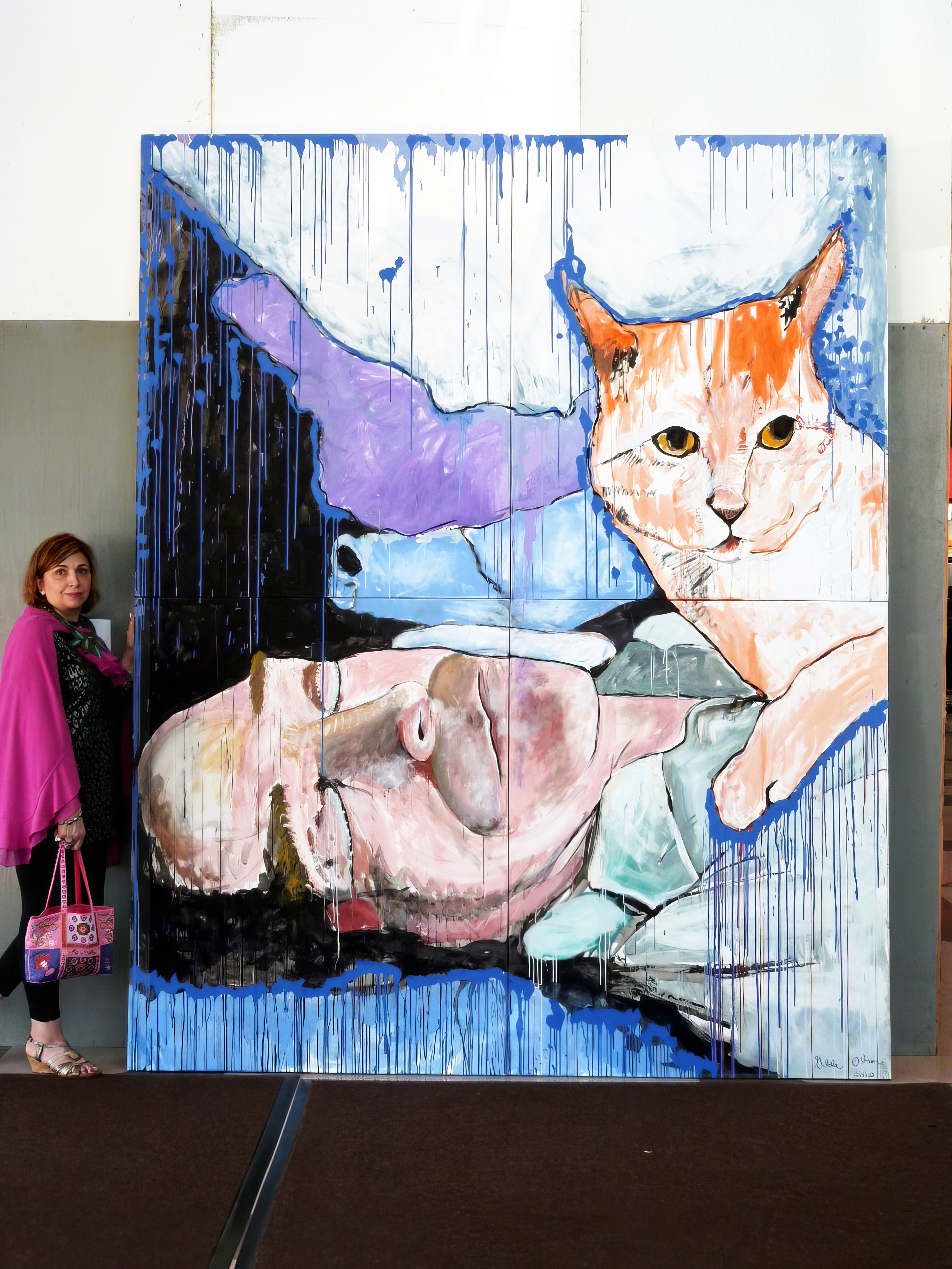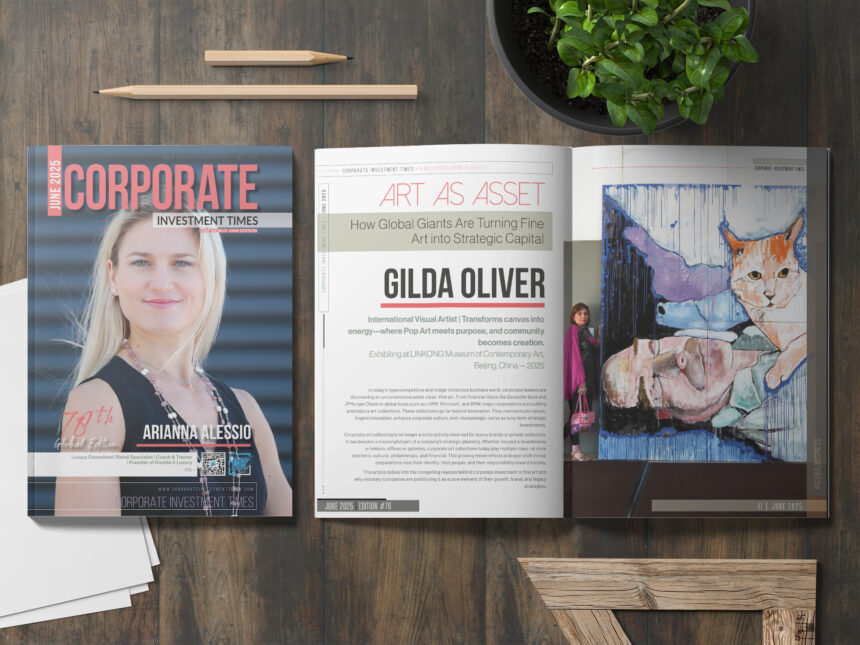In today’s hypercompetitive and image-conscious business world, corporate leaders are discovering an unconventional asset class—fine art. From financial titans like Deutsche Bank and JPMorgan Chase to global icons such as LVMH, Microsoft, and BMW, major corporations are building prestigious art collections.
These collections go far beyond decoration. They communicate values, inspire innovation, enhance corporate culture, and—increasingly—serve as long-term strategic investments.
Corporate art collecting is no longer a niche activity reserved for luxury brands or private collectors. It has become a meaningful part of a company’s strategic planning. Whether housed in boardrooms or lobbies, offices or galleries, corporate art collections today play multiple roles—at once aesthetic, cultural, philanthropic, and financial.
This growing trend reflects a deeper shift in how corporations view their identity, their people, and their responsibility toward society.
This article delves into the compelling reasons behind corporate investment in fine art and why visionary companies are positioning it as a core element of their growth, brand, and legacy strategies.
 Art as Identity and Cultural Capital
Art as Identity and Cultural Capital
At its core, art is a language of values—a silent yet powerful medium that communicates what words and numbers often cannot. For corporations, especially in an era of heightened transparency and stakeholder scrutiny, the art they choose to collect and display becomes an extension of their organizational DNA. It reveals their beliefs, aspirations, and cultural commitments in ways that are both authentic and enduring.
A thoughtfully curated art collection becomes a strategic narrative tool. It can reinforce a company’s commitment to innovation, diversity, heritage, or futurism, depending on the selection and curation approach. A company that supports emerging artists may signal a bold appetite for risk and discovery. One that showcases culturally diverse or historically significant works positions itself as inclusive, socially aware, and globally minded.
Take LVMH, for example—its private collection includes works by Picasso, Basquiat, and other icons of the modern era. This isn’t just a reflection of wealth; it’s a carefully calibrated signal of the brand’s identity: exclusive, refined, and culturally influential. For tech giants like Microsoft or Samsung, investing in digital installations, generative art, or AI-driven pieces echoes their technological edge and innovative ethos, reinforcing their place at the forefront of the digital frontier.

In this way, corporate art collections transcend aesthetics. They become cultural capital—a form of soft power that builds credibility, deepens brand affinity, and aligns internal culture with external perception. For employees, this creates pride and engagement. For clients, investors, and the public, it offers a window into the soul of the organization.
Ultimately, in a world where brand loyalty is increasingly tied to meaning and values, art allows companies to speak not only to the eyes—but to the hearts and minds of everyone they touch.
A Strategic Long-Term Investment
While art is not as liquid as other assets, its historical appreciation in value makes it an attractive long-term store of wealth. Many corporations now view art as part of a diversified portfolio, recognizing its ability to hedge against inflation and economic volatility. Artworks by established or rising artists can yield substantial returns over decades, sometimes outperforming traditional asset classes. The longevity and intrinsic uniqueness of art also mean it can be passed down as a legacy or used to enhance institutional credibility over time.
Enhancing Workspaces and Employee Engagement
An inspiring physical environment improves employee morale, creativity, and retention. Corporate spaces that include carefully selected artworks create a positive psychological impact—especially in industries where innovation, design, or creative thinking are core drivers. For instance, Deutsche Bank’s global offices are adorned with thousands of contemporary pieces, creating a workspace that stimulates dialogue and fresh thinking. Employees often take pride in being part of a culturally enriched environment, contributing to stronger organizational culture and engagement.
Impressing Clients and Stakeholders
Art elevates the client experience. From the boardroom to the reception lobby, the presence of thoughtfully curated art leaves an impression of sophistication, taste, and stability. For high-net-worth clientele or institutional stakeholders, a strong art collection can subtly communicate success, confidence, and permanence. In sectors like finance, law, and luxury services, where trust is paramount, this kind of symbolic capital can be as influential as balance sheets.
Generating Media and Brand Visibility
Corporate art initiatives often attract attention from the media, art critics, and cultural institutions. Sponsoring exhibitions, launching in-house galleries, or participating in international art fairs creates positive press and strengthens brand association with creativity and intellect. These efforts help companies distinguish themselves in a crowded media environment while nurturing brand narratives that go beyond products or profits.
Supporting ESG and Philanthropic Goals
Many corporations integrate art into their Environmental, Social, and Governance (ESG) frameworks. By supporting emerging artists, underrepresented voices, or cultural foundations, companies align their collections with broader philanthropic and sustainability goals. Art-related CSR initiatives—such as community outreach, gallery education programs, or artist residencies—demonstrate meaningful impact and help organizations fulfill their social responsibility in a visible, tangible way.
Stimulating Innovation and Creativity
Exposure to diverse artistic perspectives helps challenge assumptions and unlock unconventional thinking—an asset for companies competing in fast-moving markets. Creative environments drive innovation, especially in fields like tech, design, marketing, and strategy. For many forward-thinking firms, art is more than background—it’s a catalyst for bold ideas and lateral problem-solving. Corporations such as BMW have even partnered directly with artists to co-create projects that fuse art, design, and engineering.
Enabling Unique Networking Opportunities
Art brings people together—across sectors, cultures, and disciplines. Many corporations leverage their art collections to host events, partner with museums or curators, or collaborate with cultural councils. These engagements build bridges with influential stakeholders—political, artistic, and commercial—while positioning the company as a patron of culture and innovation. Such partnerships can create access to new markets, strategic allies, and even government endorsements.
Building Legacy and Institutional Memory
Art collections help tell the story of a corporation’s evolution, values, and ambitions. Over time, they become part of the organization’s legacy—preserved for future generations, celebrated during milestones, and shared with the public or employees. JPMorgan Chase, for instance, continues to honor the legacy of David Rockefeller through its expansive art collection. When managed with care, these collections serve as powerful symbols of a company’s commitment to excellence and vision.
Optimizing Financial Structures and Tax Incentives
In certain jurisdictions, corporate art ownership can offer tax advantages, such as deductions for art donations, depreciation benefits, or reduced capital gains on long-held assets.
Additionally, corporations may insure, lease, or lend their collections—providing financial flexibility or even generating revenue. While regulations vary, strategic consultation with tax and legal advisors can ensure art is leveraged optimally within the company’s financial framework.

Conclusion
In an era where intangible assets—such as brand reputation, cultural capital, and human engagement—increasingly define corporate worth, art emerges as a strategic cornerstone that offers a unique fusion of utility, prestige, and permanence. More than mere decoration, art transforms corporate spaces into environments of inspiration and identity. It elevates the employee experience, impresses clients and partners, and creates a lasting emotional connection that conventional branding tools often cannot. The presence of fine art within corporate environments signals a company’s commitment to creativity, sophistication, and thought leadership—values that resonate deeply in today’s knowledge-driven economy.
The most visionary organizations understand that investing in art is not a superficial exercise in aesthetics. Rather, it is an act of strategic alignment—a way of expressing and reinforcing corporate values, mission, and long-term aspirations. Art becomes a living narrative, a cultural artifact that projects how a company perceives itself and wishes to be perceived by the world. In this sense, art isn’t a luxury—it’s a language. A language through which businesses communicate their ethos, ambition, and cultural intelligence to a diverse global audience.
As global competition intensifies, and the lines between business, culture, and social responsibility continue to blur, the key question is no longer why a company should invest in art—but how it should do so with intention and integrity. For forward-looking enterprises, fine art represents far more than a tangible asset; it is a competitive advantage. It fosters innovation, attracts top talent, enhances public perception, and delivers a legacy that endures beyond quarterly results.
In the corporate landscape of tomorrow, the companies that lead will not just be those with the largest balance sheets—but those with the deepest cultural footprints. Fine art, in this context, is not just a collector’s passion. It is a boardroom priority.



